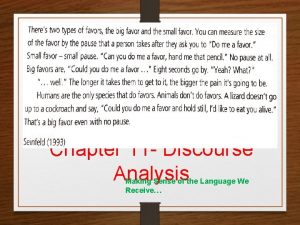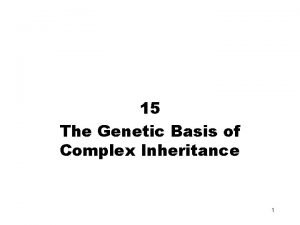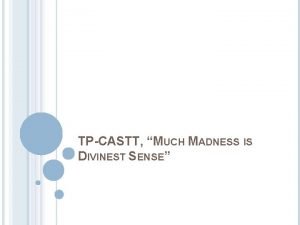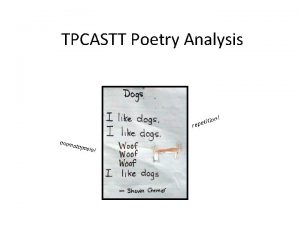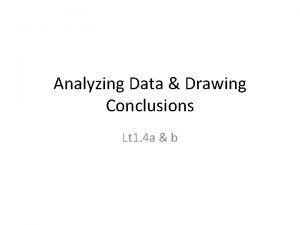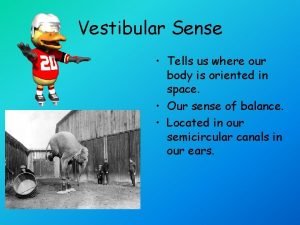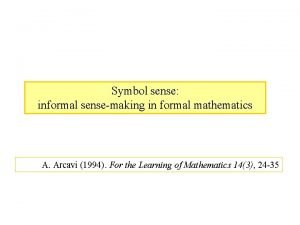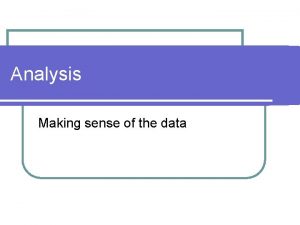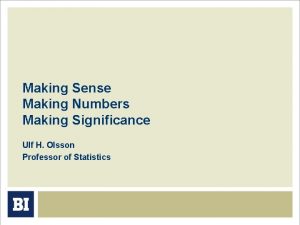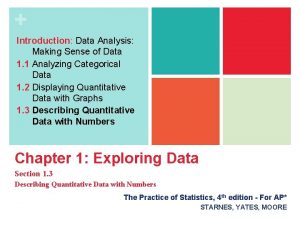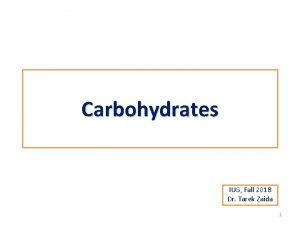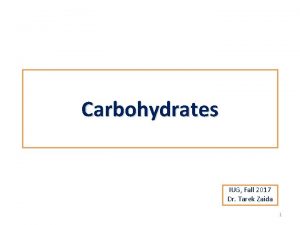DATA ANALYSIS Making Sense of Data ZAIDA RAHAYU





































- Slides: 37

DATA ANALYSIS Making Sense of Data ZAIDA RAHAYU YET


Types of Data The type(s) of data collected in a study determine the type of statistical analysis used.

Types of Data Qualitative Data Quantitative Data Nominal Discrete Ordinal Continuous Interval Ratio

Terms Describing Data Quantitative Data: • Deals with numbers. • Data which can measured. (can be subdivided into interval and ratio data) Example: - length, height, weight, volume Qualitative Data (Categorical data ): • Deals with descriptions. • Data can be observed but not measured. (can be subdivided into nominal and ordinal data) Example: - Gender, Eye color, textures

Discrete Data A quantitative data is discrete if its possible values form a set of separate numbers: 0, 1, 2, 3, …. Examples: 1. Number of pets in a household 2. Number of children in a family 3. Number of foreign languages Discrete data -- Gaps between possible values 0 1 2 3 4 5 6 7

Continuous Data A quantitative data is continuous if its possible values form an interval Measurements Examples: 1. Continuous data -- Theoretically, no gaps between possible values 0 1000 2. 3. Height/Weight Age Blood pressure

Qualitative (Categorical) data Nominal data : • A type of categorical data in which objects fall into unordered categories. • To classify characteristics of people, objects or events into categories. • Example: Gender (Male / Female). Ordinal data (Ranking scale) : • Characteristics can be put into ordered categories. • Example: Socio-economic status (Low/ Medium/ High).

Displaying Categorical & Quantitative Data

Which graph to use? Depends on type of data: ◦ For categorical you will typically use either a bar or pie graph ◦ For quantitative you can use dotplot, stemplot, histogram, boxplot.

Displaying Categorical & Quantitative Data (MINITAB)

Parametric Assumptions 1. Independent samples 2. Data normally distributed 3. Equal variances

Normality test (MINITAB)

Equal variances test(MINITAB)


Regression analysis (MINITAB)


Correlation analysis (MINITAB)


Example One-way ANOVA

One-way ANOVA(MINITAB)

ANOVA (MINITAB output)


2 samples t-test (MINITAB)


2 Samples Dependent (MINITAB)

OPTIMIZATION

OPTIMIZATION FLOWCHART

RSM Example In the article “Sealing Strength of Wax-Polyethylene Blends” by Brown, Turner, & Smith, the effects of three process variables (A) seal temperature, (B) cooling bar temperature, & (C) % polyethylene additive on the seal strength y of a bread wrapper stock were studied using a central composite design. Factor A. Seal Temp B. Cooling Bar Temp C. Polyethylene Content Range 225 - 285 46 - 64 0. 5 – 1. 7

RSM Design(MINITAB)

RSM Design(MINITAB)

RSM Analysis(MINITAB)

RSM-Regression Analysis (MINITAB) Response Surface Regression: Response versus temp, cooling, polyethylene The analysis was done using uncoded units. Estimated Regression Coefficients for Response Term Constant temp cooling polyethylene temp*temp cooling*cooling polyethylene*polyethylene temp*cooling temp*polyethylene cooling*polyethylene Coef -28. 7877 0. 1663 0. 6120 5. 4495 -0. 0003 -0. 0045 -1. 1259 -0. 0005 -0. 0098 S = 1. 089 R-Sq(adj) = 72. 6% R-Sq = 85. 6% SE Coef 11. 3798 0. 0646 0. 1914 2. 4698 0. 0001 0. 0013 0. 2813 0. 0005 0. 0076 0. 0252 T -2. 530 2. 573 3. 198 2. 206 -2. 647 -3. 633 -4. 003 -0. 909 -1. 298 0. 389 P 0. 030 0. 028 0. 010 0. 052 0. 024 0. 005 0. 003 0. 385 0. 223 0. 705

RSM-Analysis of Variance for Response Source Regression Linear Square Interaction Residual Error Lack-of-Fit Pure Error Total DF 9 3 3 3 10 5 5 19 Seq SS 70. 305 30. 960 36. 184 3. 160 11. 865 6. 905 4. 960 82. 170 Adj SS 70. 305 18. 654 36. 184 3. 160 11. 865 6. 905 4. 960 Adj MS 7. 8116 6. 2181 12. 0615 1. 0533 1. 1865 1. 3811 0. 9920 F 6. 58 5. 24 10. 17 0. 89 P 0. 003 0. 020 0. 002 0. 480 1. 39 0. 363 (MINITAB)

Surface Plot & Contour Plot (MINITAB)

RSM-Response Optimization(MINITAB)

Thank you
 Zaida padilla santana
Zaida padilla santana Zaida padilla
Zaida padilla Making sense of discourse analysis
Making sense of discourse analysis Dominant genetic variance
Dominant genetic variance Narrow sense heritability vs broad sense heritability
Narrow sense heritability vs broad sense heritability Tawon madu ngisap sekar
Tawon madu ngisap sekar Tari limbai
Tari limbai Wenny rahayu
Wenny rahayu Fisiologi pendengaran
Fisiologi pendengaran Homvet drh dian puji rahayu
Homvet drh dian puji rahayu What is inference
What is inference War making and state making as organized crime summary
War making and state making as organized crime summary Much madness is divinest sense analysis
Much madness is divinest sense analysis Tpcastt poetry
Tpcastt poetry Much madness is divinest sense line by line analysis
Much madness is divinest sense line by line analysis Qlik sense data model best practices
Qlik sense data model best practices By making inferences based on analysis of a character
By making inferences based on analysis of a character Swot analysis decision making
Swot analysis decision making Making a fist meaning
Making a fist meaning Strategic analysis and choice in strategic management
Strategic analysis and choice in strategic management Sebastian lemire
Sebastian lemire Differential analysis: the key to decision making
Differential analysis: the key to decision making Differential analysis the key to decision making
Differential analysis the key to decision making Content analysis of secondary data
Content analysis of secondary data Interpreting graphs science
Interpreting graphs science Making data useful
Making data useful Drawing conclusions from data
Drawing conclusions from data Data collection procedure and data analysis
Data collection procedure and data analysis Data preparation and basic data analysis
Data preparation and basic data analysis Data acquisition and data analysis
Data acquisition and data analysis Vestibular senses
Vestibular senses Uil elementary number sense practice test
Uil elementary number sense practice test Sense and sensibility thesis statement
Sense and sensibility thesis statement Is sociology based on common sense
Is sociology based on common sense Sense and reference linguistics
Sense and reference linguistics Define minarchy
Define minarchy Sense organs
Sense organs Symbol sense
Symbol sense


